COMED-K Code: E204
Lighted to Enlighten
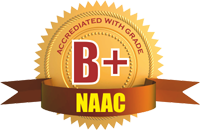
Mechanical Engineering
About
The Department of Mechanical Engineering was established in the year 1979 with an intake of 60 students under Gulbarga University, Kalaburgi. The department has committed and dedicated team of 11 teaching staff with masters and PhD degrees. Specialization in Thermal,Production and Design streams. A team of non teaching staff supports the department in conducting labs. The department has well equipped labs and all licensed softwares as per AICTE/VTU requirements. A Departmental Association is formed with a faculty as an advisor. The Association helps in arranging programmes for students to exhibit their talents in cultural,sports,technical events and helping in overall development of the students.
The department with help of Alumni Association of the college invites the Alumni for seminars,helping students with their internship and industrial projects and also guiding them in shaping their future.
Vision
To be recognized as a trend setting department of excellence by providing highly competent and quality Education to Mechanical Engineering students to meet the changing needs of mechanical industries and also contribute in research, relevant to industry and society.
Mission
-To be an ideal department in imparting quality education to the students and enhancing their skills to make them to be competitive
to the industry.
-Training the students in tune with the evolving challenges and societal needs through flexible and innovative learning process.
-To establish centers of excellence and collaborate with R and D organizations to foster research activities.
-To collaborate with Industries to provide solutions to identified problems.
-To promote entrepreneurship.
SWOC
Strength:
1. Experienced teaching staff with an average experience of 18 years.
2. Well-equipped Labs.
3. Meticulous working culture in the Department.
4. Mentoring of the students to improve their performance.
5. Conducting programs for improving the soft skills of the students.
6. Arranging the training program for campus selection.
Weakness:
1. Very low CET rank Students are admitted.
2. Fewer placements.
3. Locality disadvantage.
4. Climatic conditions of Raichur City.
Opportunity:
1. Aligning the students with emerging trends in education.
2. Encouraging new ideas and support for start-up Innovations.
3. To inculcate meticulous working culture with the Students.
4. To achieve and maintainresults above VTU results.
5. To imbibe fairness, transparency and ethics in the students.
6. To build the strong future leaders.
Challenge:
1. Gap between Industry and Academia.
2. Poor communication skill of students.
3. Lack of Mechanical Industries in this region.
Faculty
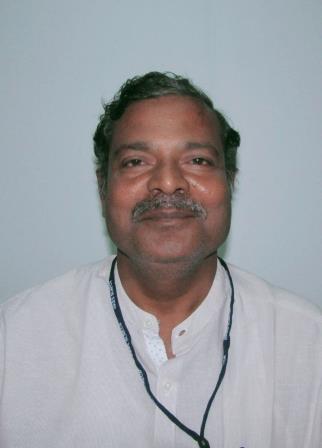 Dr.S.Channabasava, PhD
Dr.S.Channabasava, PhD
Associate Professor & HOD
Experience-35 Years Dr. Venugopal N., PhD.
Dr. Venugopal N., PhD.
Associate Professor
Experience-8 Years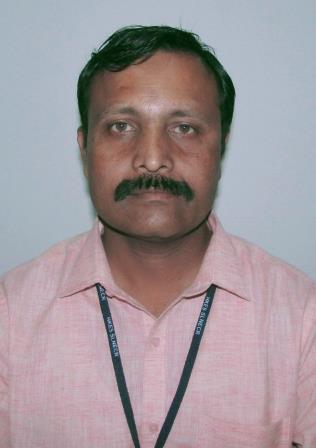 Hanumanth Rao Diwate, M.Tech
Hanumanth Rao Diwate, M.Tech
Assistant Professor
Experience-15 Years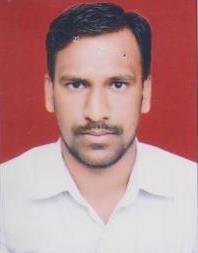 Sangamesh N.D., M.Tech
Sangamesh N.D., M.Tech
Assistant Professor
Experience-8 Years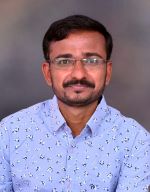 Vinayak Horapyati, M.Tech
Vinayak Horapyati, M.Tech
Assistant Professor
Experience-5 Years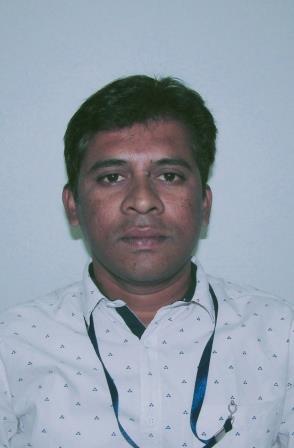 Anil M. Kanta, M.Tech
Anil M. Kanta, M.Tech
Assistant Professor
Experience-5 Years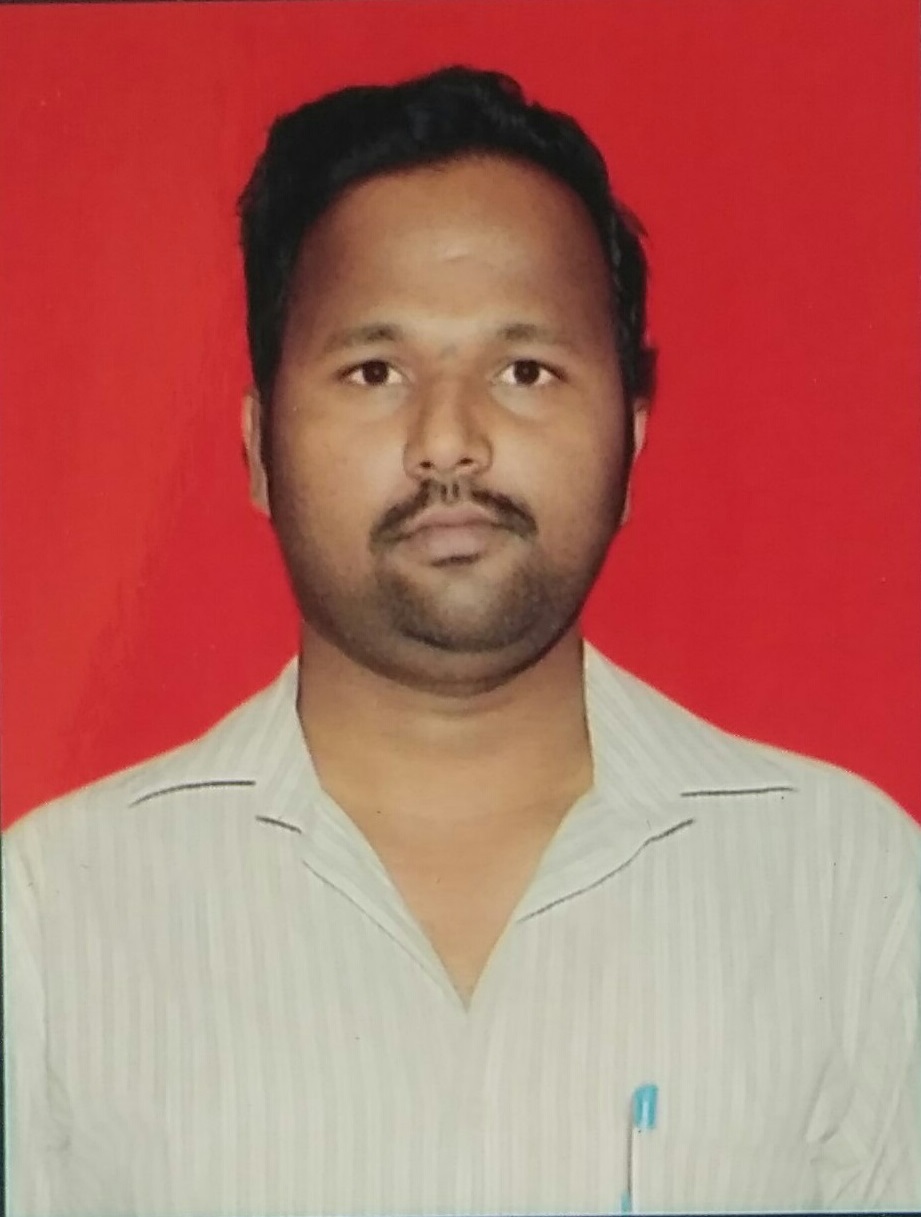 Shrishaila Reddy, M.Tech
Shrishaila Reddy, M.Tech
Assistant Professor
Experience-4 Years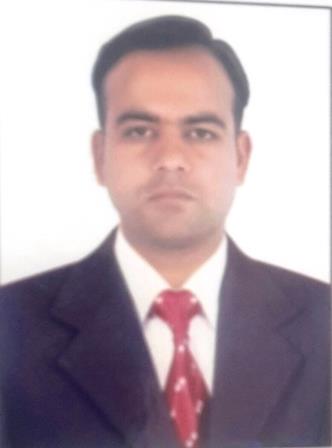 Vijendra Kukanur, M.Tech
Vijendra Kukanur, M.Tech
Assistant Professor
Experience-9 Years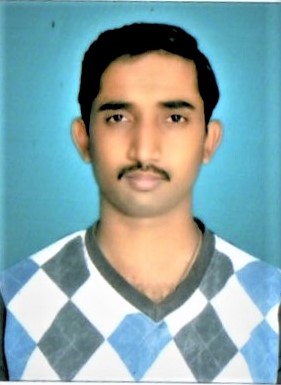 Dwaraka Prasad, M.Tech
Dwaraka Prasad, M.Tech
Assistant Professor
Experience-1 Years
Infrastructure
The department has 11 laboratories. We have more than 35 dual core i3, i5 computer systems and all are connected in LAN. The department also has the WiFi facility. More than 12 legal application softwares and many open licence application softwares are present.
Reprographics facilities are also available in the department itself. And also all the labs have First Aid facilities.
Laboratory details
| Name of the Lab | Area in Sq.m | Major Equipments |
| Lab 1 FMS Lab |
Centrifugal Pump, Pelton Turbine, Franscis Turbine, Kaplan Turbine, Gear Pump, Reciprocating Pump. |
|
| Lab 2 CAED Lab |
21 (HP core i3 and Dual core) systems, Canon LBP 2900b Laser printer,100mps and 1gbps switch, UPS equipped with LED projector & installed with Solid edge software |
|
| Lab 3 Foundry & Forging Lab |
Sand Testing Equipment & Core Testing,UTM Compression Testing Machine,Sand Ramming Tools, Mould Boxes & Paterns, Gas furnace |
|
| Lab 4 MS & MT Lab |
Metallurgical Microscope 2 Nos, Polishing Machine for Specimen | |
| Lab 5 Material Science & Inst |
Metallurgical Microscope, Polishing specimens Universal Testing Machine's Compassion Testing Machine | |
| Lab 6 Heat Transfer Lab |
Thermal Conductivity, Natural and forced convection, Emmisivity, Heat exchanger, Pin-Fin apparatus, refrigeration and Air Conditioning. |
|
| Lab 7 CAD & CAM |
20 PCs M Tab Milling, Solid Edge Software 60 Licenses, Server Upgrade Dual Core, P4 2.8X2 160 4B Hard Disk, Analysis 13 SNX Can Software and UPS power backup. |
|
| Lab 8 Energy Conversion Lab |
Morse Test,Single cylinder Diesel Engine, Multi Cylinder diesel Engine, Air Compressor,Four Stroke Petrol engine,Redwood Viscometer, Pensky martin apparatus, Valve timing diagram. |
|
| Lab 9 Basic Workshop |
Chisels-05, Hacksaw Frame-30, Electrodes, Welding Gun-2, Tongs-20, Cutters=15, Files-60,BenchWise-20, Welding Sheild, Marking Gauge, tri-Square. |
|
| Lab 10 Design Lab |
Governors, Balancing equipment, Gyroscope,Journal Bearing, Vibration Setup |
|
| Lab 11 Machine Shop |
21 Lathe, 02 Shapers, 02 Milling, 01 Su 2101 Automatic Capstan & Turret Lathe, Are Welding Aircolled & Hot Spot welding Testing equipment , Core Testing. |
Syllabus
Timetable
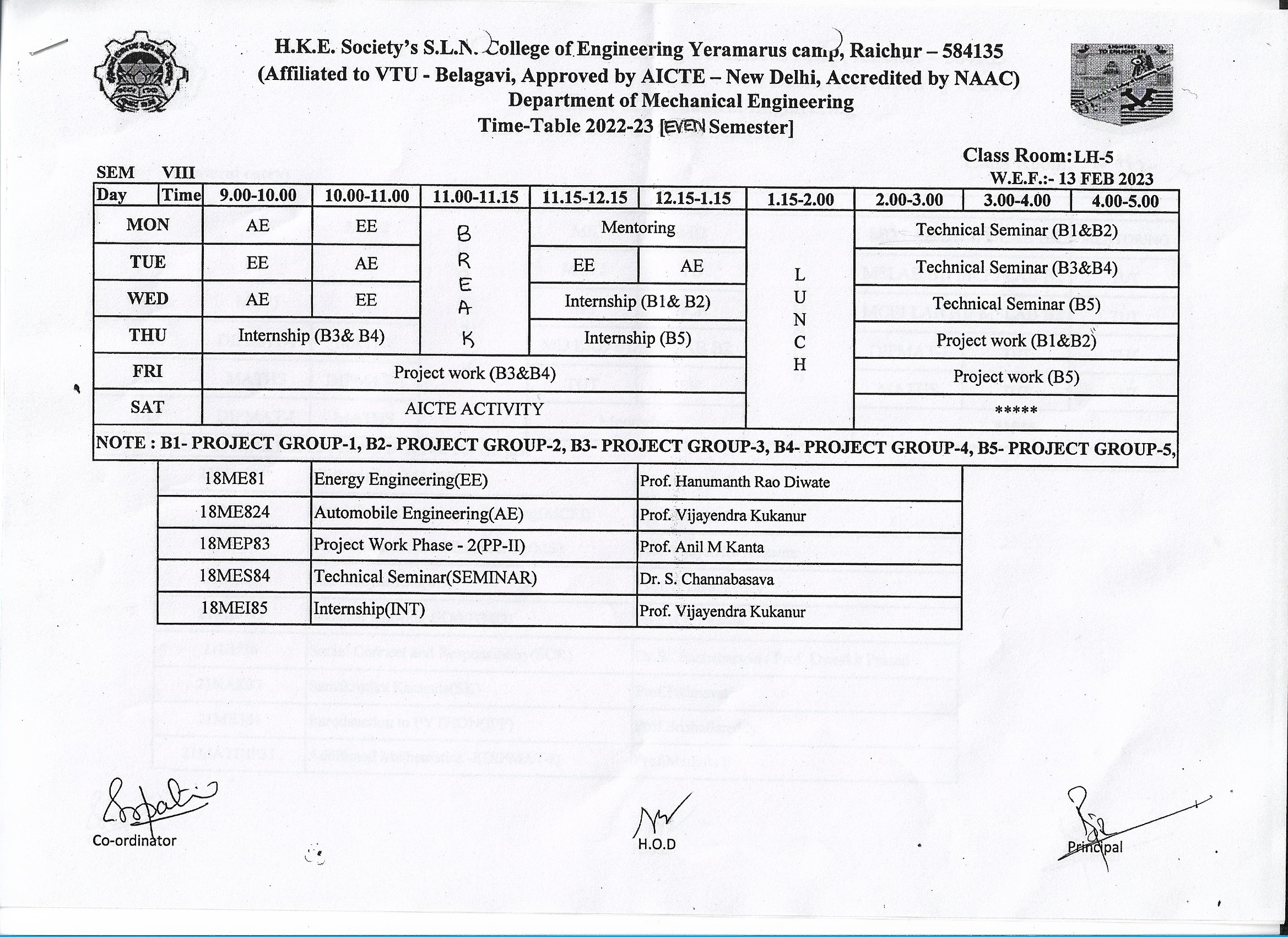
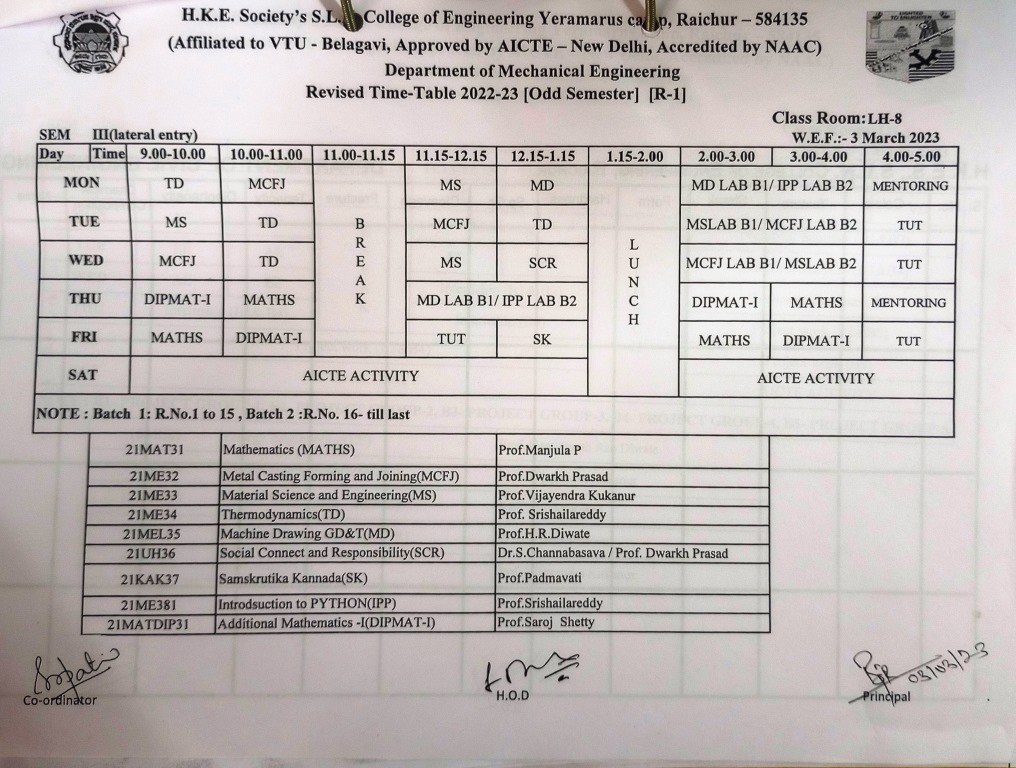
PSOs & COs
Programme Specific Outcomes
PSO3: Apply the knowledge of manufacturing the components which are to be cost competitive in the market.
| Course Name | Engineering Mathematics – III |
| Course Code | 17MAT31 |
| CO1 | Know the use of periodic signals and Fourier series to analyze circuits and system communications |
| CO2 | Explain the general linear system theory for continuous-time signals and digital signal processing using the Fourier Transform and z-transform |
| CO3 | Employ appropriate numerical methods to solve algebraic and transcendental equations |
| CO4 | Apply Green's Theorem, Divergence Theorem and Stokes' theorem in various applications in the field of electro-magnetic and gravitational fields and fluid flow problems |
| CO5 | Determine the extremals of functionals and solve the simple problems of the calculus of variations |
| Course Name | Materials Science |
| Course Code | 17ME32 |
| CO1 | Describe the mechanical properties of metals, their alloys and various modes of failure |
| CO2 | Understand the microstructures of ferrous and non-ferrous materials to mechanical properties |
| CO3 | Explain the processes of heat treatment of various alloys |
| CO4 | Understand the properties and potentialities of various materials available and material selection procedures |
| CO5 | Know about composite materials and their processing as well as applications |
| Course Name | Basic Thermodynamics |
| Course Code | 17ME33 |
| CO1 | Explain thermodynamic systems, properties, Zeroth law of thermodynamics, temperature scales and energy interactions |
| CO2 | Determine heat, work, internal energy, enthalpy for flow & non flow process using First and Second Law of Thermodynamics |
| CO3 | Interpret behavior of pure substances and its applications to practical problems |
| CO4 | Determine change in internal energy, change in enthalpy and change in entropy using TD relations for ideal gases |
| CO5 | Calculate Thermodynamics properties of real gases at all ranges of pressure, temperatures using modified equation of state including Vander Waals equation, Redlich Wong equation and Beattie |
| Course Name | Mechanics of Materials |
| Course Code | 17ME34 |
| CO1 | Understand simple, compound, thermal stresses and strains their relations, Poisson’s ratio, Hooke’s law, mechanical properties including elastic constants and their relations |
| CO2 | Determine stresses, strains and deformations in bars with varying circular and rectangular cross-sections subjected to normal and temperature loads |
| CO3 | Determine plane stress, principal stress, maximum shear stress and their orientations using analytical method and Mohr’s circle |
| CO4 | Determine the dimensions of structural members including beams, bars and rods using Energy methods and also stress distribution in thick and thin cylinders |
| CO5 | Draw SFD and BMD for different beams including cantilever beams, simply supported beams and overhanging beams subjected to UDL, UVL, Point loads and couples |
| CO6 | Determine dimensions, bending stress, shear stress and its distribution in beams of circular, rectangular, symmetrical I and T sections subjected to point loads and UDL |
| Course Name | Metal Casting and Welding |
| Course Code | 17ME35A |
| CO1 | Describe the casting process, preparation of Green, Core, dry sand molds and Sweep, Shell, Investment and plaster molds |
| CO2 | Explain the Pattern, Core, Gating, Riser system and Jolt, Squeeze, Sand Slinger Molding Machines |
| CO3 | Compare the Gas fired pit, Resistance, Coreless, Electrical and Cupola Metal Furnaces |
| CO4 | Compare the Gravity, Pressure die, Centrifugal, Squeeze, slush and Continuous Metal mold castings |
| CO5 | Explain the Solidification process and Casting of Non-Ferrous Metals |
| CO6 | Describe the Metal Arc, TIG, MIG, Submerged and Atomic Hydrogen Welding processes used in manufacturing |
| CO7 | Explain the Resistance spot, Seam, Butt, Projection, Friction, Explosive, Thermit, Laser and Electron Beam Special type of welding process used in manufacturing |
| CO8 | Describe the Metallurgical aspects in Welding and inspection methods for the quality assurance of components made of casting and joining process |
| Course Name | Computer Aided Machine Drawing |
| Course Code | 17ME36A |
| CO1 | Sections of pyramids, prisms, cubes, cones and cylinders resting on their bases in 2D |
| CO2 | Orthographic views of machine parts with and without sectioning in 2D |
| CO3 | Sectional views for threads with terminologies of ISO Metric, BSW, square and acme, sellers and American standard threads in 2D |
| CO4 | Hexagonal and square headed bolt and nut with washer, stud bolts with nut and lock nut, flanged nut, slotted nut, taper and split pin for locking counter sunk head screw, grub screw, Allen screw assemblies in 2D |
| CO5 | Parallel key, Taper key, and Woodruff Key as per the ISO standards in 2D |
| CO6 | Single and double riveted lap joints, butt joints with single/double cover straps, cotter and knuckle joint for two rods in 2D |
| CO7 | Sketch split muff, protected type flanged, pin type flexible, Oldham’s and universal couplings in 2D |
| CO8 | Assemblies from the part drawings with limits ,fits and tolerance given for Plummer block, Ram bottom safety valve, I.C. Engine connecting rod,Screw Jack, Tailstock of lathe, Machine Vice and Lathe square tool post in 2D and 3D |
Course Outcome : Click here
MOUs
- Pantech Prolabs Pvt. Ltd., Hyderabad
- CADMAXX Pvt. Ltd., Bengaluru
- Bosch Rexroth Center of Compete, Kalaburgi
Feedback Analysis
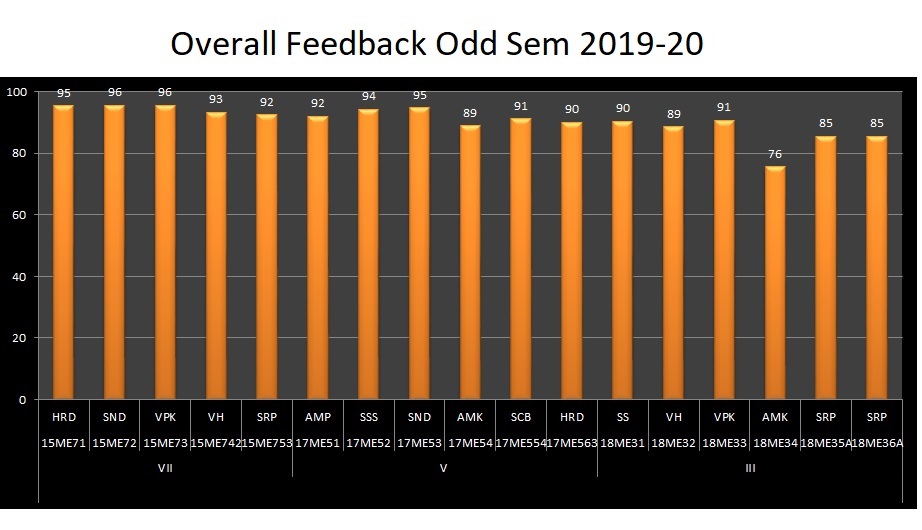
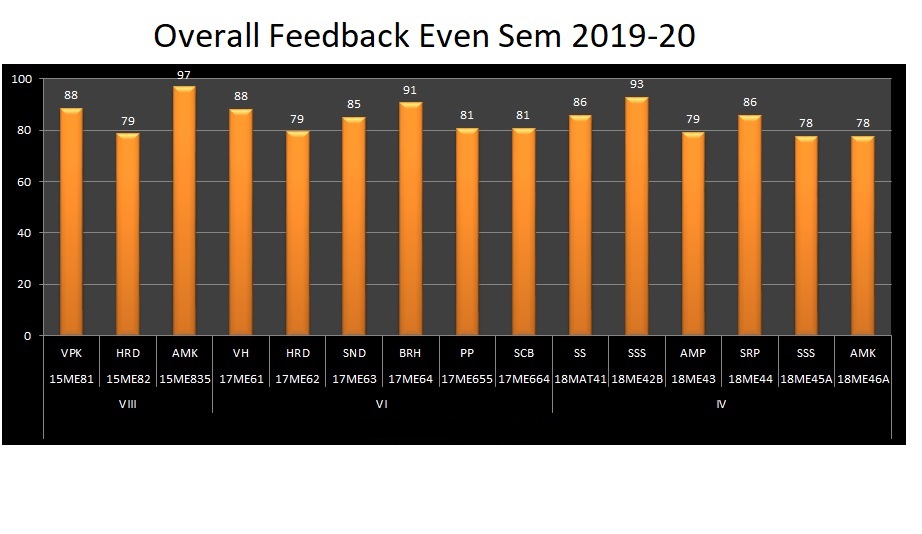
News & Events
Photo Gallery
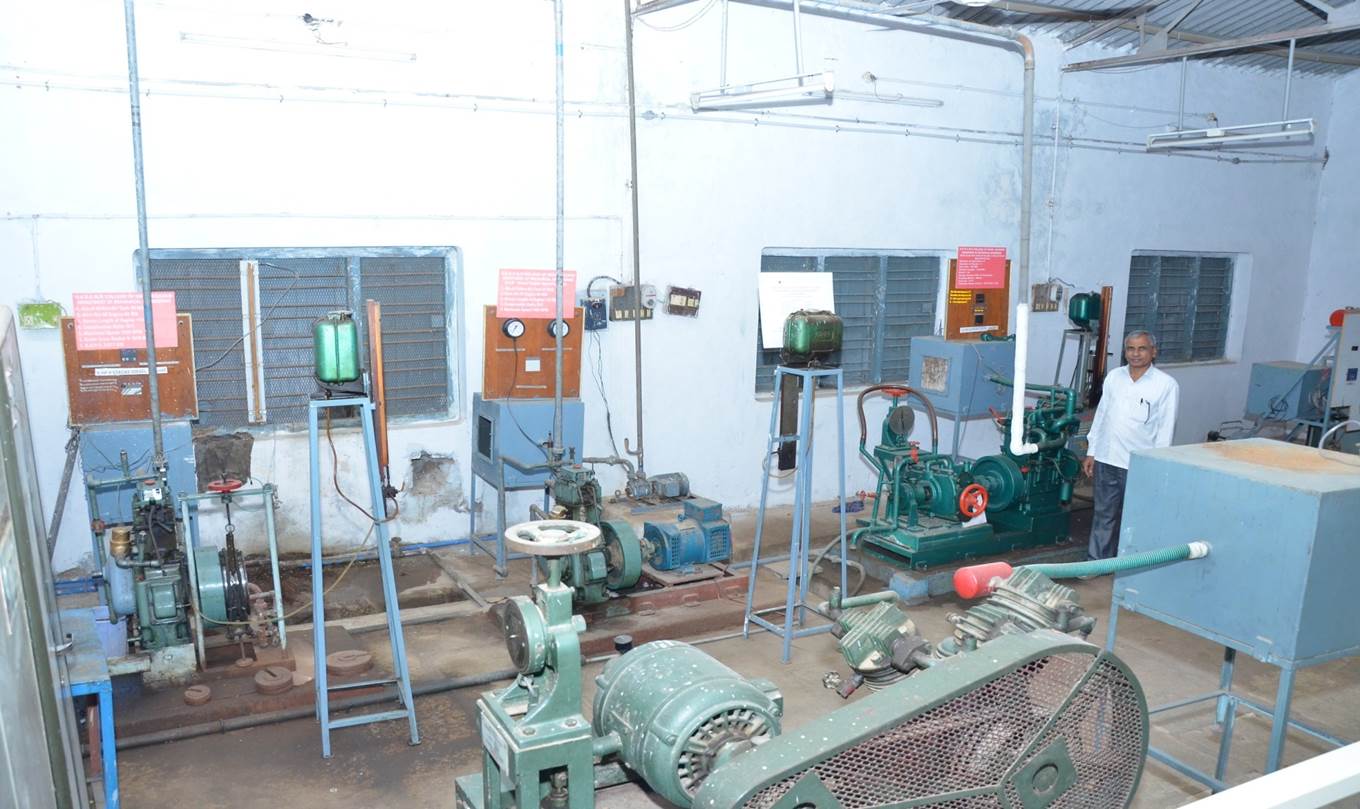 Energy Lab |
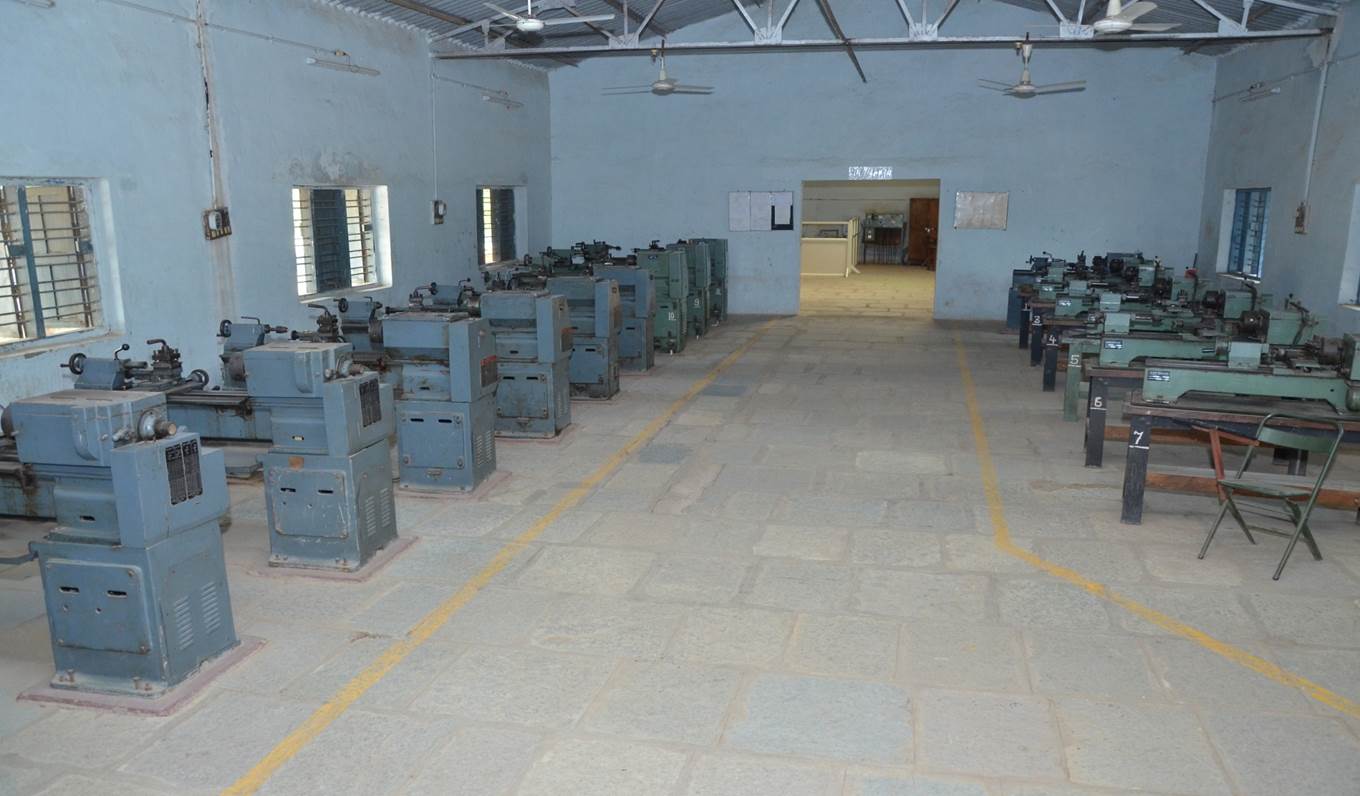 Machine Lab |
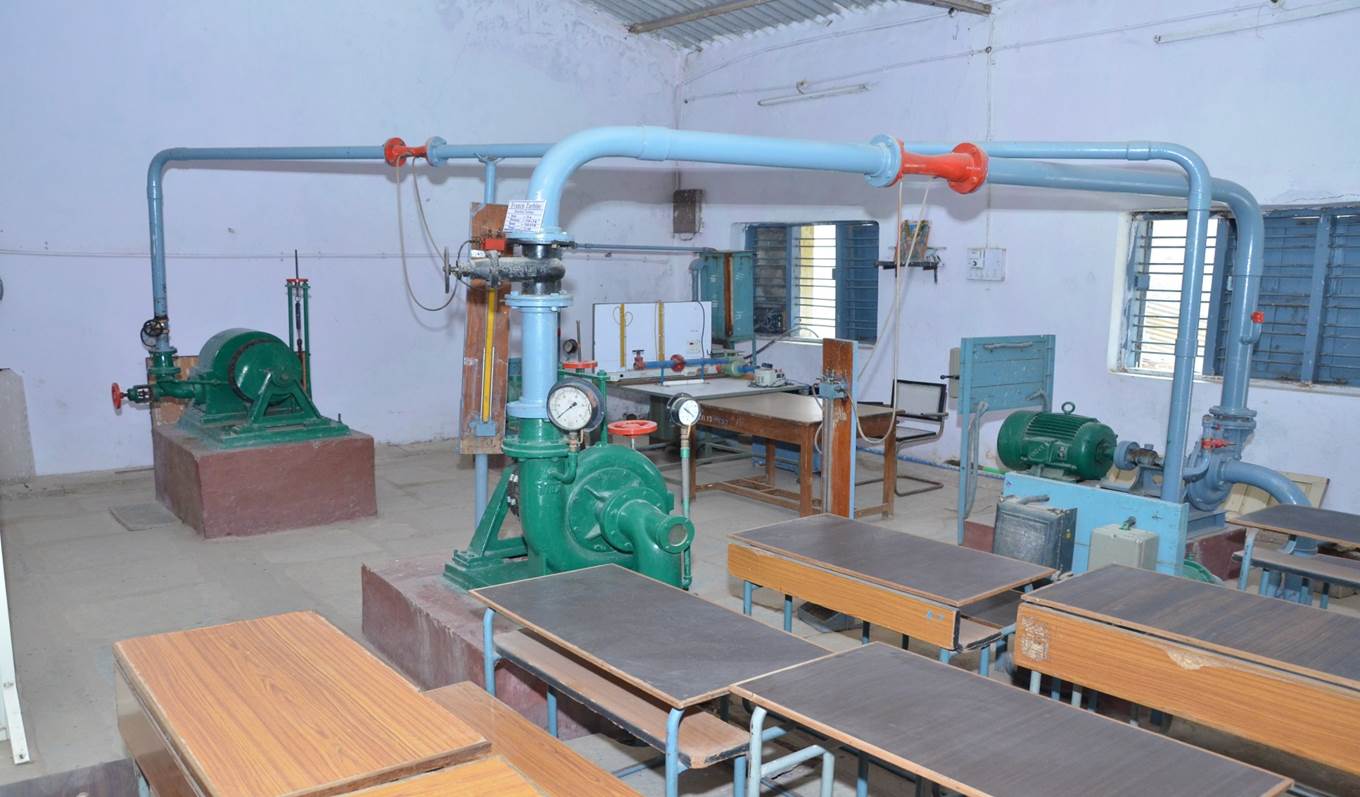 Fluid Mechanics Lab |
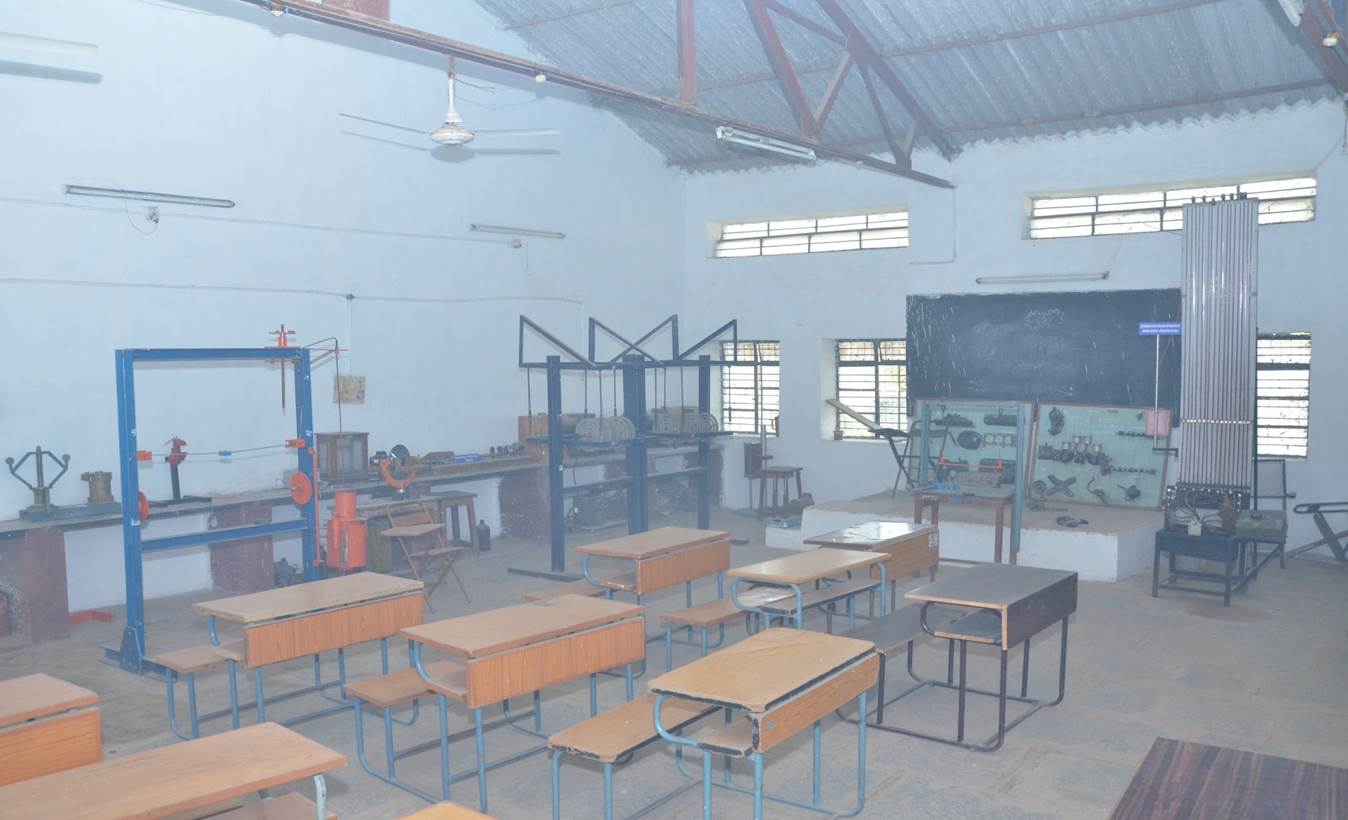 Design Lab |
